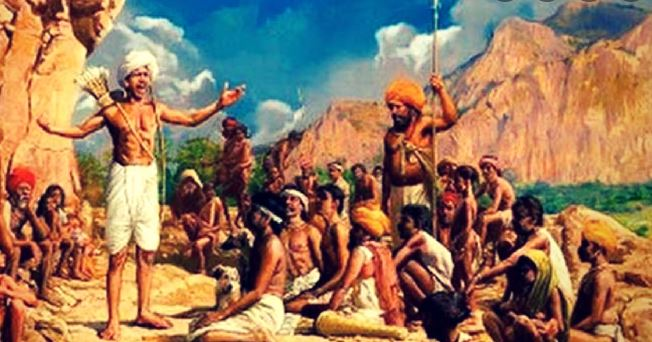- Courses
- GS Full Course 1 Year
- GS Full Course 2 Year
- GS Full Course 3 Year
- GS Full Course Till Selection
- Online Program
- GS Recorded Course
- NCERT (Recorded 500+ Hours)
- Polity Recorded Course
- Geography Recorded Course
- Economy Recorded Course
- AMAC Recorded Course
- Modern India, Post Independence & World History
- Environment Recoded Course
- Governance Recoded Course
- Science & Tech. Recoded Course
- International Relations and Internal Security Recorded Course
- Disaster Management Module Course
- Ethics Recoded Course
- Essay Recoded Course
- Current Affairs Recoded Course
- CSAT
- 5 LAYERED ARJUNA Mentorship
- Public Administration Optional
- ABOUT US
- OUR TOPPERS
- TEST SERIES
- FREE STUDY MATERIAL
- VIDEOS
- CONTACT US
PM Modi Pays Tribute to Santhal Freedom Fighters in Mann Ki Baat
PM Modi Pays Tribute to Santhal Freedom Fighters in Mann Ki Baat
03-07-2024

-
Introduction
- In the 111th episode of Mann Ki Baat, Prime Minister Narendra Modi paid tribute to the sacrifices and bravery of the Santhal tribal community.
- This was his first address after assuming office for the third consecutive term.
-
Hul Diwas: Commemoration of Santhal Rebellion
- The address coincided with the annual celebration of Hul Diwas on June 30.
- Hul Diwas commemorates the Santhal Hul (rebellion) of 1855 against British oppression.
-
Significance of the Day:
- Modi emphasised the importance of June 30 for the tribal community, who celebrate the day as Hul Diwas.
- He highlighted the courage of tribal brothers Sido and Kanhu, who mobilised their community members to fight against foreign rule.
-
Historical Context:
- Modi shed light on the historical context of the Santhal Hul, stating that Sido and Kanhu mobilised thousands of tribals from Jharkhand's Santhal Pargana to take up arms against British rulers in 1855.
- He acknowledged the atrocities committed by the British against the tribal community and the restrictions imposed upon them.
-
Tribute to Tribal Martyrs:
- Modi praised the incredible bravery displayed by the tribal brothers who were martyred in their fight against oppression.
- He emphasised that their ultimate sacrifice continues to inspire the nation.
-
Santhali Language Song Excerpt:
- Modi encouraged listeners to pay attention to an audio clip featuring an excerpt from a song in the Santhali language, dedicated to the tribal martyrs.
About Santhal Tribal Community in India:
|
Must Check: Best IAS Coaching In Delhi



